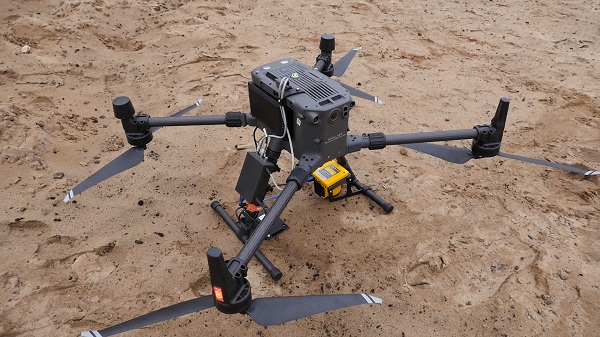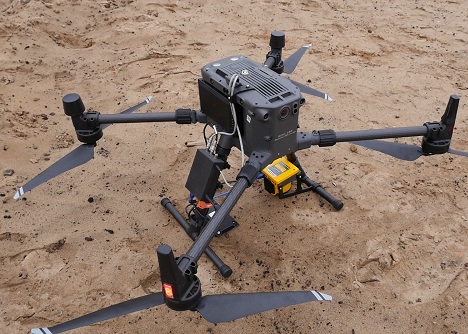JBUAS has deliverd the impressive UgCS Pergam Falcon TDLAS system to a UK client for use on methane survey projects in 2022. The volume of required work in 2022 is expected to triple, and further systems will be ordered to meet these expectations via a framework arrangement.
The Integrated System
JBUAS in partnership with SPH Engineering (UgCS) can provide a methane detection & survey solution to support ISO16064 today with the same technology being utilised for regulated quantification in the future. What this means in real terms is that one set of technology bought today will enable a drone survey company to perform surveys well into the future post EA regulation. Make an enquiry to find out more.

The system kit utilises the UgCS SkyHub and TTF System that is tried and tested with the DJI M210, M600 Pro, and DJI M300 RTK.
The drone methane detection & survey system from JBUAS, is an integrated solution that includes an eye safe class 2 laser from Pergam-Suisse. This system enables Tunable Diode Laser Absorption Spectroscopy (TDLAS), which records methane gas in Parts Per Million x Metres (PPMxM). By measuring the methane in this way, a better assessment of gas release is possible (compared to simple handheld readings). Make an enquiry to find out more.
About Methane
Methane is emitted during the production and transport of coal, natural gas, and oil. Methane emissions also result from livestock and other agricultural practices, land use and by the decay of organic waste in municipal solid waste landfills. A way of comparing these gases is to use a metric called Global Warming Potential (GWP). GWP allows us to compare how much warming a newly emitted gas will cause, relative to the same mass for Carbon Dioxide or CO2. The following data is taken from an IPCC support paper authored in 2018 and it gives a good indication of the effects of the gases over time. Over a 20 year period, methane gas is 84x more effective at warming our climate.

Methane can be characterised as a “super-pollutant”. While it stays in the atmosphere only for 12 years, it is up to 86 times more powerful in warming the climate in the short term than the most discussed greenhouse gas (GHG), carbon dioxide. Methane is also a major precursor for tropospheric ozone, which is harmful for human health and plant growth. While some 40% of methane is natural, about 60% of it originates from anthropogenic sources, mostly in the energy, agriculture, and waste sectors.
Make an enquiry to find out more about drone methane surveys


